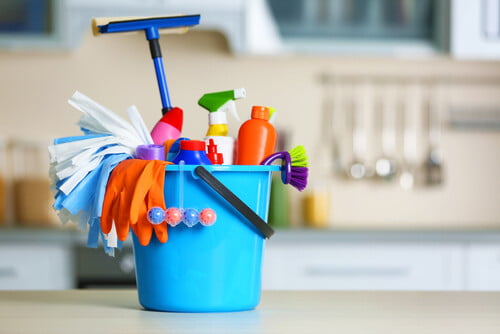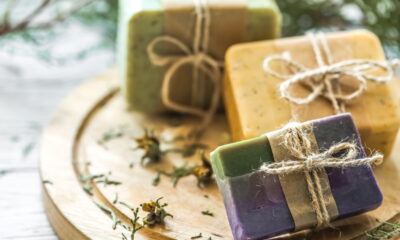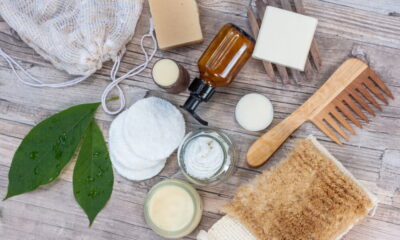Living a holistically eco-friendly lifestyle and working to protect the environment begins at the home.
Our lives are centered around our houses. It’s the place our families gather and where we start and end each day, so it’s vital to ensure you are following sustainable practices in the home.
Many are aware of some typical household items that are overused, improperly disposed of, and cause harm to the earth. A common example is plastic items such as grocery bags or other single-use plastics that contribute to landfill waste and lead to damage in our oceans.
Another item often blamed for environmental damage is batteries. Billions of batteries are disposed of each year, each containing toxic materials such as mercury and lead. These types of hazardous waste can cause a lot of damage when they aren’t disposed of correctly.
Although you may be familiar with some of these standard threats, there are some shocking items in your home that you may not realize are causing some serious damage to the ecosystem. Take note of these five household items that hurt the environment and the solutions you can implement to avoid further endangering the earth.
1. Your Razor
Unfortunately, your morning shave can contribute to the biggest source of waste in your bathroom.
Razors are associated with high water usage and the carbon-intensive production of plastic and steel. Are you wondering how big of a problem could this be? The EPA estimates that 2 billion razors are disposed of each year. While the steel blades may be accepted as a recyclable material, a standard disposable razor is decomposable and will end up sitting in a landfill.
To have a more sustainable shave, invest in an electric or straight razor. You can also purchase reusable razors and only change the blades. This won’t eliminate waste, but it will make a big impact on the reduction.
2. Your Toothbrush
While we’re talking about waste in the bathroom, we should mention the environmental evils of your toothbrush.
Measuring up pretty closely to the impact of disposable razors, an estimated 1 billion toothbrushes end up in a landfill each year in North America alone. And each one takes over 400 years to decompose!
While you may be convinced you’re following healthy brushing practices by switching out your toothbrush regularly, it’s important to think about the weight of this item’s environmental impact. Think about it. There are over 7 billion people in the world. If each person goes through four toothbrushes a year, that’s 28 billion toothbrushes!
An electric toothbrush may seem like a sound solution, but these have a downside as well. Electric toothbrushes requiring batteries contribute to a leaking toxins problem. A sustainable solution? Bamboo.
Bamboo toothbrushes are 100% biodegradable. They are also antimicrobial, so your teeth will be protected from bacteria.
3. Your Mattress
An old mattress is bad for your health, your bedroom, and it could hurt the environment if improperly disposed of.
Over the years old mattresses collect dust mites, dead skin cells, and the average 26 gallons of sweat you perspire each year sleeping. Imagine the damage you’re doing to your indoor air quality with this bacteria beast.
The disposable practices of mattresses are also staggering. For your best sleep and health, you should be replacing your mattress every 7-10 years, but this doesn’t mean you should just throw it away or set it on the curb. About 20 million mattresses end up in a landfill each year, which is especially disappointing when you learn that 85% of materials in a mattress are recyclable.
To protect yourself and your health, know the signs you need a new mattress so you aren’t sleeping on a bacteria-filled bed, and make sure to follow environmentally friendly disposal practices when it’s time for an upgrade. You can donate your mattress or find a recycling center if your mattress is damaged.
When it’s time to look for a new mattress, shop the organic section. These are made of 100% natural materials and reduce chemical output.
4. Your Daily Tea
The benefits of tea are unquestionable. A warm cup of tea at night can help you sleep, improve your weight loss, and even give you better dental health. Unfortunately, your tea bags are not composable and pose a threat to the earth. If you drink a cup of tea every day, you’re contributing to hundreds of tea bags sitting in a landfill each year.
So, what do you do if you can’t give up your daily cup of tea but you want to be more environmentally friendly? You have a few options.
One solution is to find more eco-friendly tea bags; however, these are still only about 70-80% biodegradable. For a better solution, try drinking loose leaf tea. There isn’t a difference in taste, only packaging. You can even use a reusable strainer to reduce mess and plastic waste.
5. Your Menstrual Products
We’re going back to the bathroom with this one. While you may have a general conception that most of your waste comes from the kitchen, this room of your house seems to be a serious danger to waste production.
An estimated 12 billion sanitary pads and 7 billion tampons are disposed of each year in the U.S. Of course, menstruation isn’t just going to come to an end, so a sustainable solution has to be in sight.
One great option is a Diva Cup. This is a reusable, menstrual cup that can last for 10 years with proper care. If you prefer an external-use product, there are also reusable cloth pads available like the Glad Rags that save you money, are free from toxins, and help to reduce waste.
Conclusion:
Following sustainable practices isn’t only important to your home. Every small change you can make to adjust to eco-friendly practices can help clean up the environment and protect our earth.
One large issue is the effects of industrial waste. A good place to begin when you start to re-evaluate your home practices is to identify the disposable items you use such as grocery bags, kitchen goods, and personal goods. Try to replace these with reusable items to reduce your waste.
If you don’t know where to get started, this helpful guide outlines reusable goods that can replace the disposables in your home.































